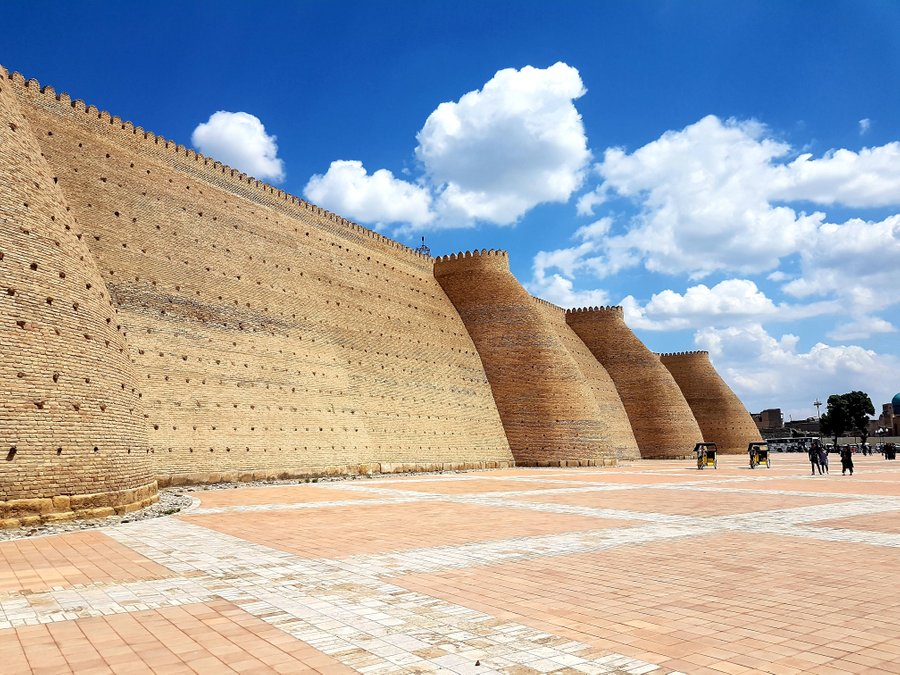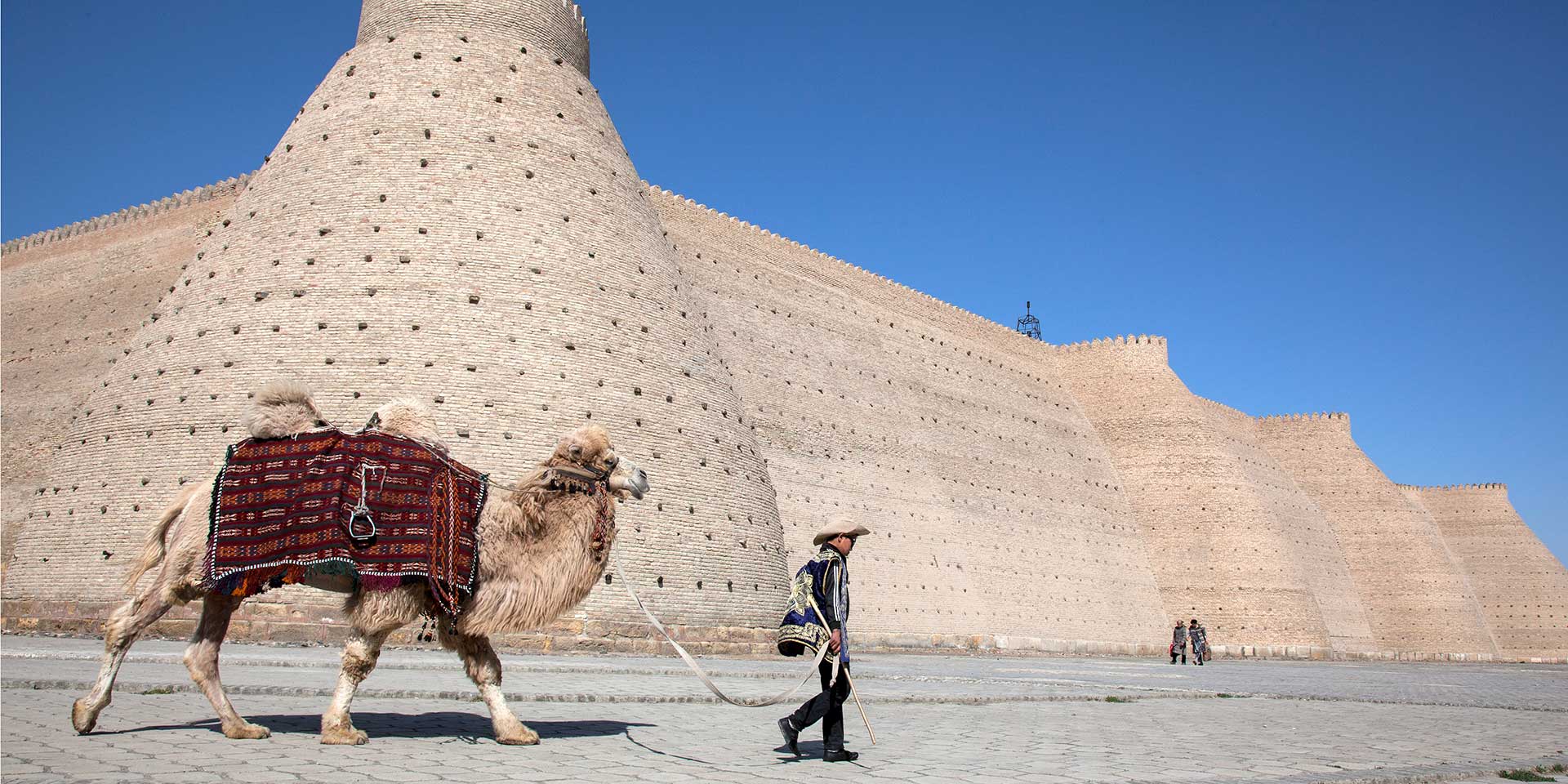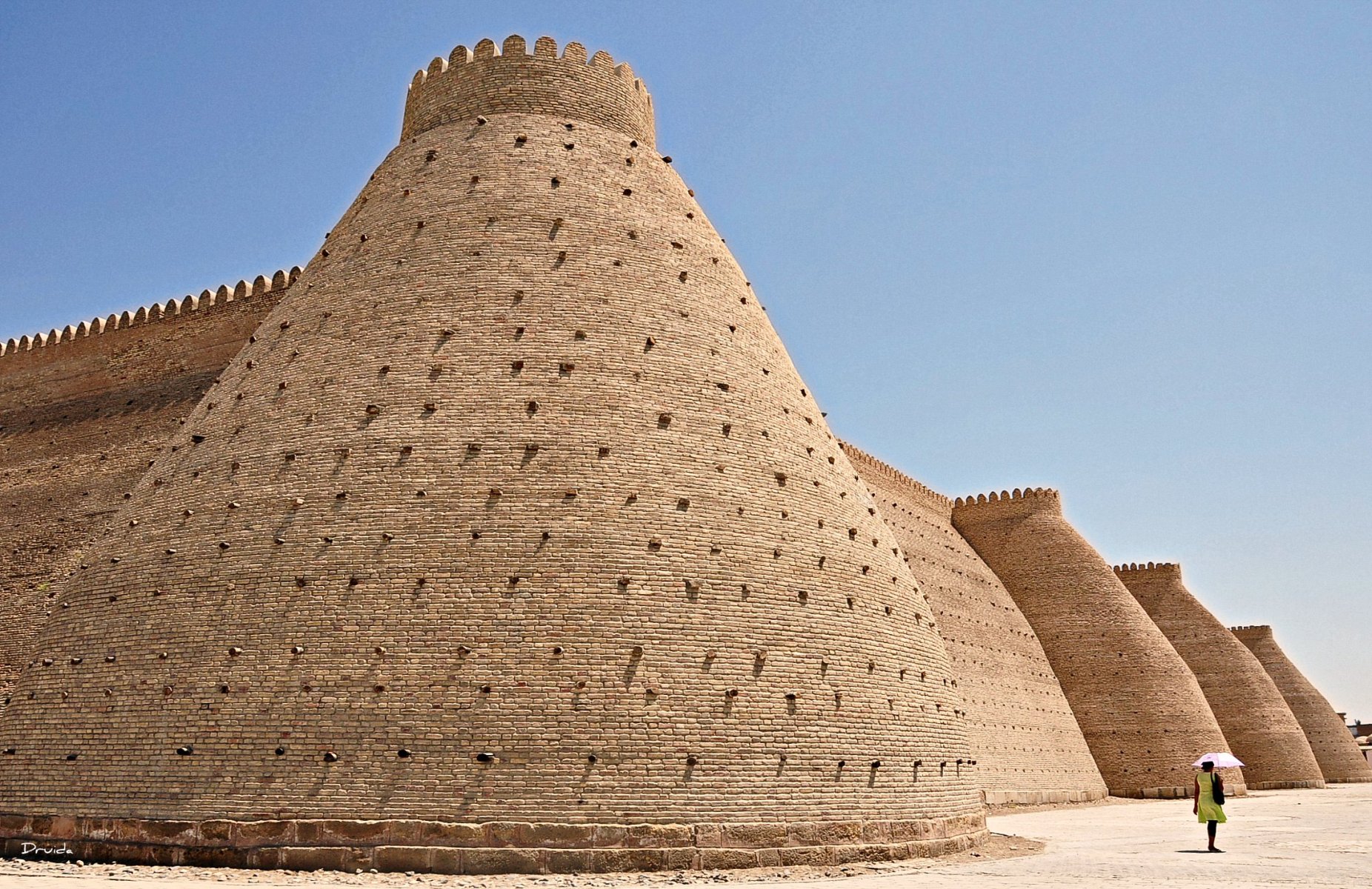The Ark of Bukhara, a monumental fortress in the heart of Bukhara, Uzbekistan, stands as a powerful symbol of the city’s rich history. At over 1500 years old, this fortress has played a pivotal role in Bukhara’s position as a key hub along the Silk Road—a vital trade route linking East and West. This article delves into the Ark’s significance, architectural features, and its enduring legacy.

Bukhara’s Strategic Role on the Silk Road
Bukhara, with its 2000-year history, was one of the most influential cities on the Silk Road, connecting merchants, scholars, and cultures from China to the Mediterranean. It became a bustling center for trade, intellectual exchange, and culture. Its strategic location made it a coveted prize for various empires, but it also allowed the city to thrive for centuries, influencing both commerce and knowledge.

The Ark’s Architecture: A Fortress of Power and Protection
The Ark of Bukhara is an architectural masterpiece. Built as a military stronghold, it became the royal residence and administrative center for the emirs of Bukhara. The fortress is marked by towering walls, large gates, and sprawling courtyards, with several significant structures within, including royal chambers, mosques, and a mint. The Ark’s design combines Persian, Arab, and Central Asian influences, reflecting the cultural melting pot that Bukhara represented.

The fortress’s strategic location on a raised mound provided a clear vantage point, making it easier to defend. Its reinforced walls and monumental gates symbolized the military might and political power of the rulers who resided within.
A Witness to History: The Fall of the Emirate of Bukhara
Throughout its history, the Ark has withstood numerous invasions and challenges. Its most significant event came in 1920, when the Soviet Red Army besieged Bukhara, ending the independence of the emirate and marking a significant shift in Central Asia’s political landscape. The fall of the Ark symbolized the collapse of centuries-old power structures, ushering in a new era under Soviet rule.

The Ark’s Enduring Legacy
Today, the Ark of Bukhara stands as a UNESCO World Heritage site, attracting visitors from around the world. It is a symbol of Bukhara’s resilience, cultural richness, and strategic importance in the history of the Silk Road. Despite centuries of turmoil, the Ark remains a testament to the enduring legacy of one of Central Asia’s most influential cities.

Conclusion
The Ark of Bukhara is more than just a fortress; it is a symbol of the city’s pivotal role in global history. As a stronghold, royal residence, and administrative hub, it showcases Bukhara’s power and enduring influence along the Silk Road. Today, the Ark continues to captivate as a cultural and historical landmark, preserving the legacy of Bukhara for future generations.
Video
</p>

